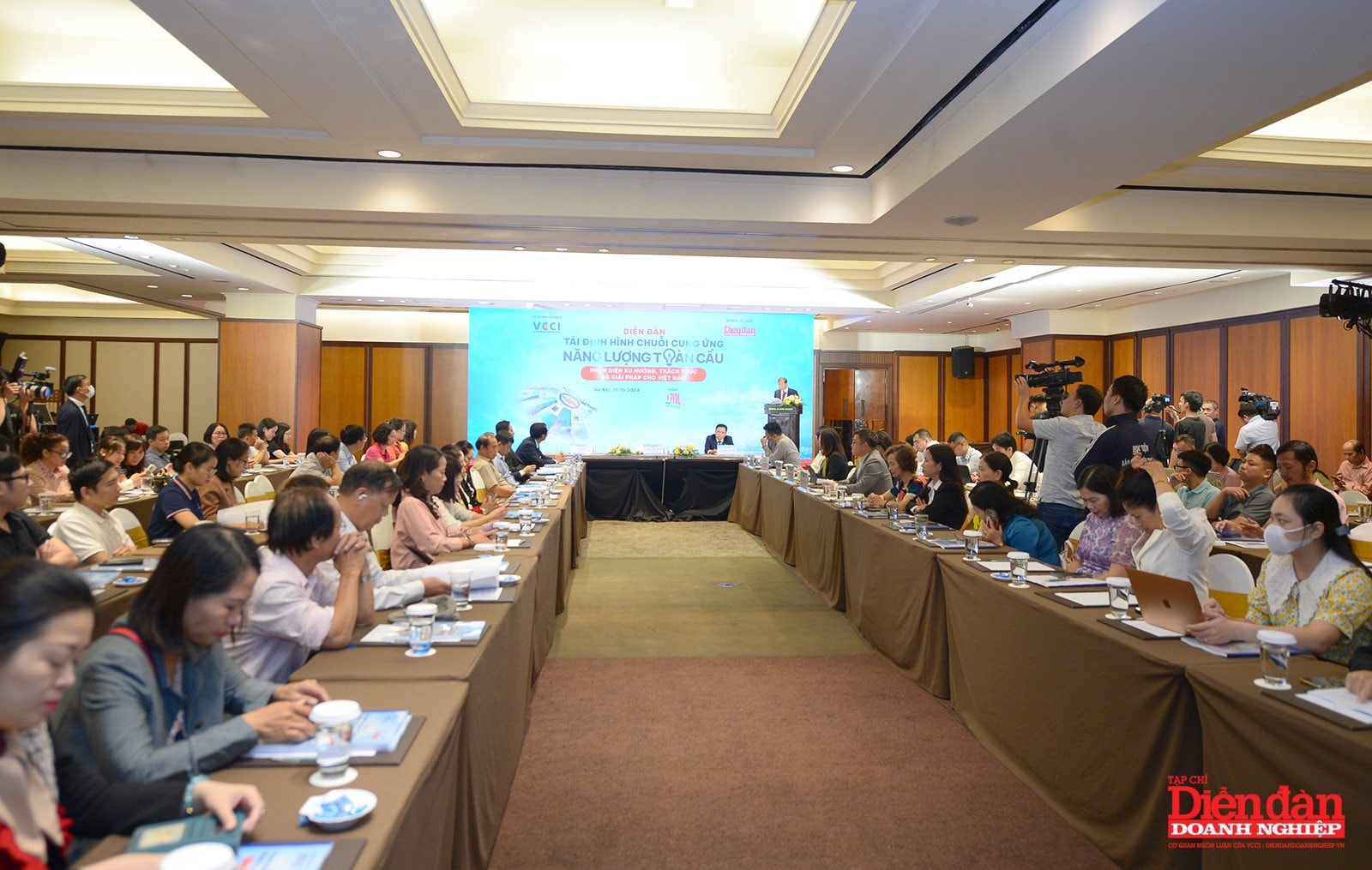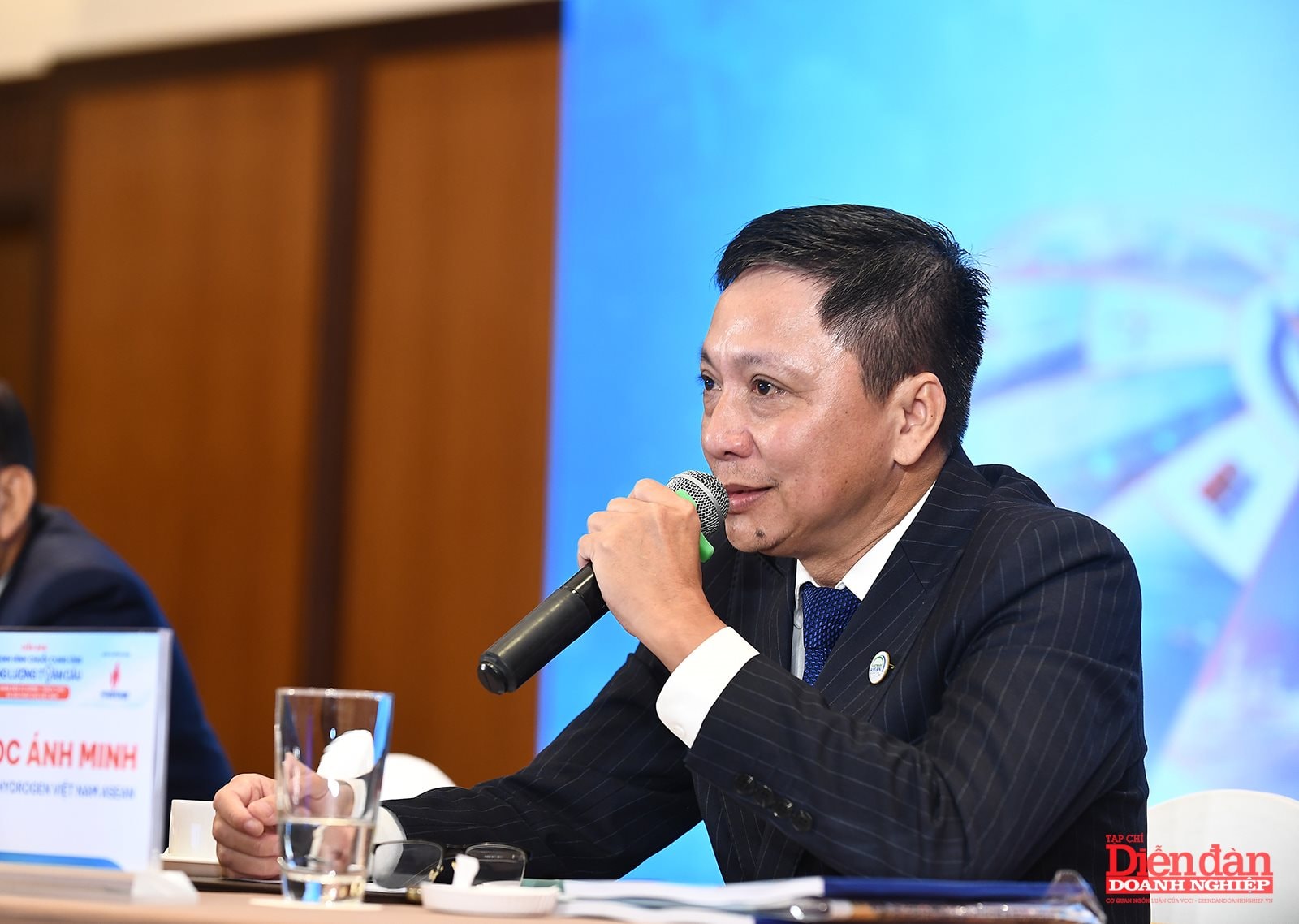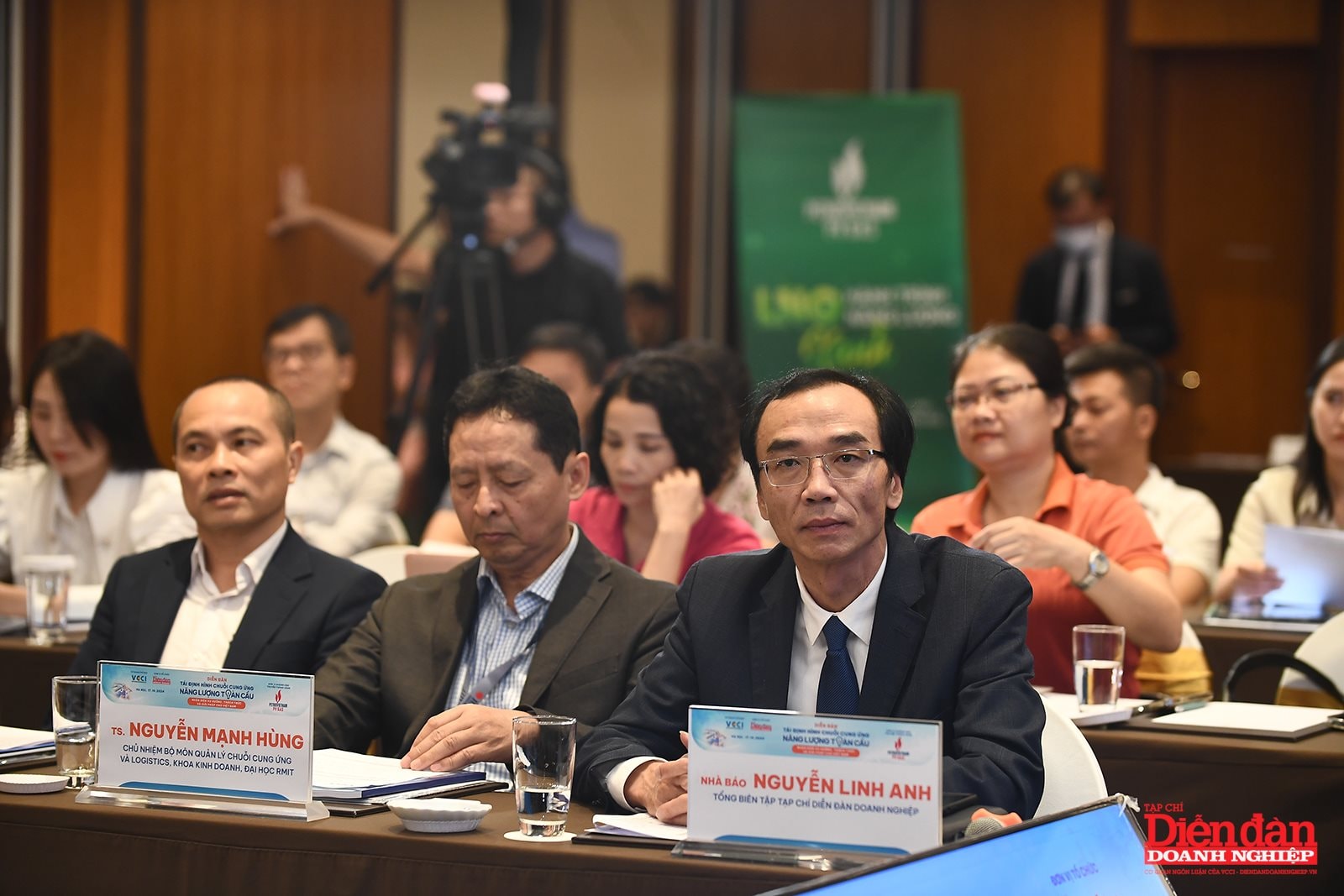Experts believe that businesses in sectors such as oil, refining, and gas have ample investment opportunities in low-emission hydrogen.
Speaking at the discussion session of the forum "Reshaping the Global Energy Supply Chain: Identifying Trends, Challenges, and Solutions for Vietnam," organized by the *Business Forum Magazine*, Mr. Le Ngoc Anh Minh, Chairman of the ASEAN Vietnam Hydrogen Club, shared that renewable energy is receiving particular attention from many foreign partners, including Japan, Singapore, and Australia...

The forum, titled "Reshaping the Global Energy Supply Chain: Identifying Trends, Challenges, and Solutions for Vietnam," was organized on October 17th in Hanoi.
Mr. Minh noted that Vietnam's Hydrogen Energy Development Strategy to 2030, with a vision to 2050, announced in February 2024, aims to reach a production capacity of 100,000 to 500,000 tons of hydrogen annually by 2030 through the use of renewable energy and other processes with carbon capture. By 2050, the target is to achieve a hydrogen production capacity of 10 to 20 million tons per year from renewable energy sources and other carbon capture processes.
Meanwhile, according to the IEA, global hydrogen production in 2023 was 97 million tons, with less than 1% classified as low-emission hydrogen. Low-emission hydrogen includes hydrogen produced through water electrolysis powered by low-emission electricity sources (such as solar, wind, or nuclear energy).

Mr. Le Ngoc Anh Minh, Chairman of the ASEAN Vietnam Hydrogen Club, mentioned that renewable energy is receiving significant interest from foreign partners.
In addition, hydrogen produced from biomass or fossil fuels using carbon capture, utilization, and storage (CCUS) technology is also considered low-emission hydrogen. The IEA does not use color to distinguish between different hydrogen production pathways.
While the potential is vast, Mr. Minh also pointed out several bottlenecks in low-emission hydrogen production. Specifically, the commercial viability of low-emission hydrogen or synthetic fuels is not yet feasible due to high R&D costs, expensive equipment, the high cost of low-emission electricity, large water consumption (approximately 9–10 liters of water for 1kg of hydrogen), high storage and transportation costs, low demand, and the lack of formal standards and regulations. Mr. Minh said that the IEA plans to complete the low-emission hydrogen standards by 2025.

However, challenges also present opportunities. The Chairman of the ASEAN Vietnam Hydrogen Club outlined opportunities for businesses in the green hydrogen sector.
"The first opportunity will come to specialized consulting businesses in technical and legal areas—consulting the government on low-emission hydrogen standards and derivatives based on international standards, following the IEA's completion of H2 standards in 2025 and NH3 in 2026," said Mr. Minh.
Additionally, countries do not yet mutually recognize each other's standards, so there is a need to advocate for mutual recognition of low-emission and renewable hydrogen certification programs.
The second opportunity will arise for businesses in sectors such as oil and gas and chemicals, as outlined in the Power Plan 8 and the National Hydrogen Strategy.
Mr. Minh also pointed out that at the end of September 2024, the European Commission imposed restrictions on EU Hydrogen Bank, limiting Chinese-origin electrolyzers to under 25% of the total project value for the second round of EU auctions. Additionally, in May 2024, the U.S., followed by Canada in August 2024, imposed a 100% tariff on Chinese electric vehicles. This presents an opportunity for businesses involved in trade and hydrogen equipment manufacturing.
Another opportunity mentioned by Mr. Minh is in the semiconductor industry.
In terms of opportunities for training and supplying engineers for hydrogen equipment manufacturing, commercial opportunities exist for hydrogen equipment trade, partnering with China and India to access EU and North American markets.

The expert also highlighted opportunities in hydrogen equipment manufacturing for export to the above markets, through technology cooperation with the EU, Japan, and South Korea to organize production and export.
The fourth opportunity involves supplying hydrogen energy for the North-South high-speed railway and urban metro systems. Mr. Minh noted that the Politburo has decided to invest in the North-South high-speed rail project without dependence on foreign countries. The designed speed is 350 km/h, with a total length of approximately 1,541 km and a total investment of about USD 67.34 billion (according to information from the Ministry of Transport press conference on October 1, 2024).
By referring to Japan's Shinkansen, which consumes 0.07 to 0.08 kWh of electricity per kilometer per passenger for trains carrying 1,300 passengers, the low-emission hydrogen required to produce the tracks, carriages, and locomotives can be calculated.
As such, Mr. Minh suggested the opportunity for cooperation in developing hydrogen fuel cell-powered trains, calculating the low-emission hydrogen required to operate these trains.

Delegates attending the Forum.
The fifth opportunity involves natural hydrogen exploration.
He shared that natural hydrogen has been discovered and exploited in Mali, Africa, with recent discoveries in France, Albania, Texas, and Alaska, and is currently being explored in Australia and Canada. The estimated production cost is below USD 1/kg, with high commercial potential upon discovery of deposits.
In August 2024, the Philippines organized a tender for natural hydrogen exploration. Mr. Minh suggested that Vietnam, with its natural hydrogen reserves, should conduct exploration to leverage its oil and gas strengths along the East Sea’s fault lines or the sedimentary basins with magmatic intrusion and young volcanoes, such as the Phu Khanh and Cuu Long basins or the areas of Central Vietnam, the Central Highlands, and the Northwest.
The expert also proposed the opportunity for exporting green hydrogen to supply the domestic market, ASEAN, and Northeast Asia.
Mr. Minh also recommended that oil, refining, and gas businesses invest in this green hydrogen sector to avoid spreading out investments in energy projects and ensure alignment with the overall energy plan.





